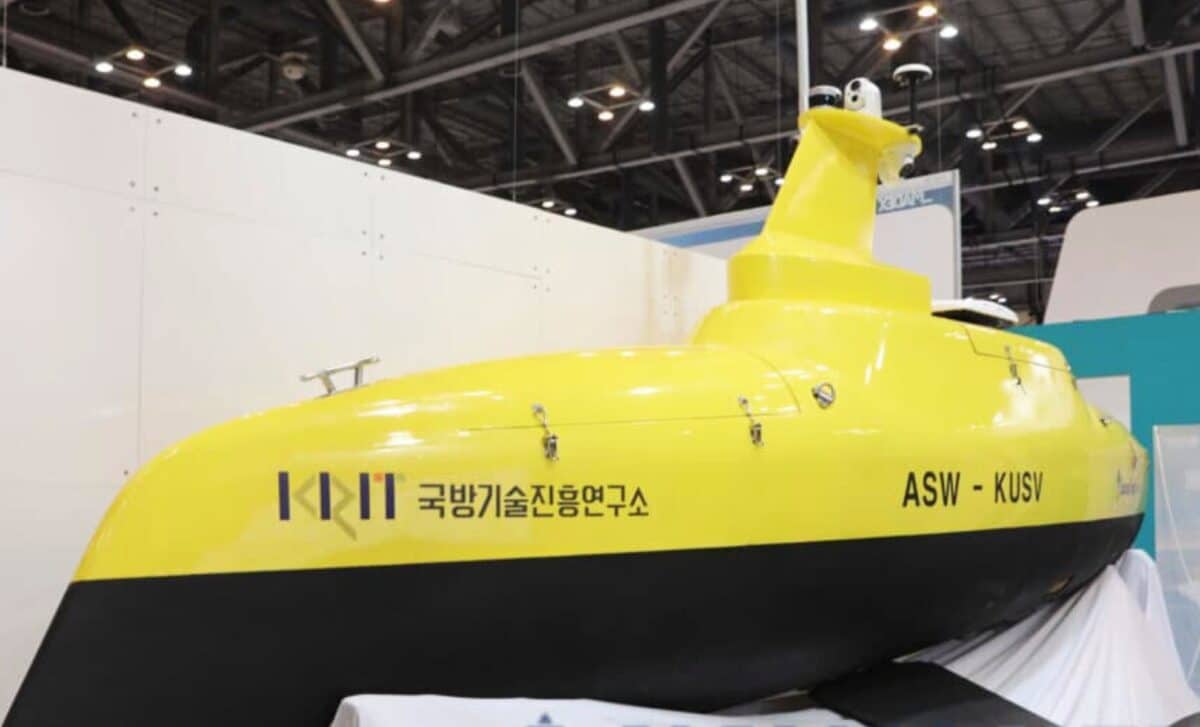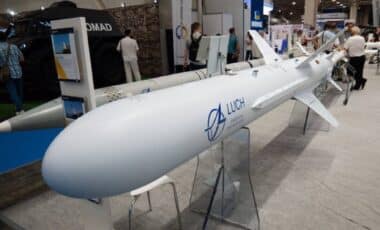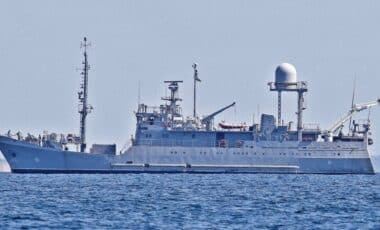South Korea has introduced the ASW-USV, a new type of unmanned surface vehicle (USV) designed to bolster its anti-submarine warfare capabilities. The 20-ton drone, equipped with advanced sonar technology, represents a significant leap forward in the country’s naval strategy, offering an autonomous and stealthy solution for tracking underwater threats. This innovation is expected to play a crucial role in securing contested maritime regions, particularly in the face of growing submarine activity by North Korea.
The ASW-USV is part of South Korea’s expanding efforts to modernize its naval forces. With a sleek, crewless design, it combines cutting-edge technology with operational endurance, capable of remaining at sea for up to 150 hours without human intervention. Its deployment marks a shift towards unmanned systems that enhance maritime surveillance, offering a more cost-effective and less risky alternative to traditional manned naval assets.
These Tanks Are Dominating the Battlefield Right Now
ASW-USV: A Technological Marvel
The ASW-USV is built for stealth and extended operations. At 5.8 meters in length and weighing just 2 tons in its empty state, it is designed to minimize its presence in the water. According to reports, the drone is constructed using a polymer reinforced with fibers that makes it non-magnetic, which is a critical feature to avoid detection by enemy sensors, relay Forum Militaire.
Its hull shape, with a sharp prow, reduces drag and enhances its acoustic stealth, lowering the risk of detection by opposing forces. Powered by a hybrid diesel-electric engine, the ASW-USV can travel at speeds up to 26 km/h, which, while not fast, allows it to cover vast distances during surveillance operations.
What sets the ASW-USV apart is its advanced sonar technology. The vehicle is equipped with two state-of-the-art sonar systems: a Long Range Active Sonar and a side-scan sonar. The Long Range Active Sonar can detect underwater targets from 20 meters up to 30 kilometers away.
It uses a vertical antenna that can be submerged up to 240 meters, providing a detailed and wide-range acoustic image of the surrounding environment. Meanwhile, the side-scan sonar, mounted in a submerged gondola, can scan the ocean floor laterally up to 600 meters, offering a detailed overview of potential underwater threats.
Integration into a Larger Network
The ASW-USV is not designed to operate alone. It is part of a broader network of surveillance assets that includes airborne drones, maritime patrol aircraft, and naval vessels. According to experts, the vehicle serves as a critical node in a distributed listening network. This allows for real-time coordination with other platforms, such as aerial drones or naval ships, providing a comprehensive surveillance picture.
The ASW-USV acts as the central link, relaying its sonar data to command centers, whether at sea or on land. This integration into a larger system enhances its ability to detect and track submerged threats, reinforcing South Korea’s maritime defense strategy.
The drone’s ability to function autonomously without human intervention allows it to stay on mission for extended periods without the risk of fatigue or human error. Its role in modern anti-submarine warfare fits well with the growing trend of using unmanned systems for long-duration tasks. By operating as part of an interconnected network, the ASW-USV strengthens the overall effectiveness of South Korea’s surveillance capabilities in contested waters.
A Response to North Korea’s Submarine Threat
North Korea’s submarine fleet poses a unique challenge for South Korea’s defense forces. The North operates one of the most active and diverse submarine fleets in the world, with numerous smaller, often stealthy vessels designed to infiltrate shallow waters around the Korean Peninsula. The ASW-USV offers an ideal solution to these threats. Its quiet operation and long endurance make it well-suited to detecting these small, often camouflaged submarines.
As reported, the ASW-USV provides a response to North Korea’s increasingly sophisticated naval tactics, including the use of miniaturized submarines and hidden coastal bases. The drone’s ability to operate continuously, without risking the lives of personnel, offers a distinct advantage in monitoring these difficult-to-detect threats. Its stealthy design and advanced sonar systems enable it to quietly gather intelligence and track submarines over long distances, providing South Korea with a powerful tool for regional security.
The Growing Global Market for Naval Drones
The development of the ASW-USV is part of a global trend toward increasing investment in unmanned naval systems. According to industry projections, the global market for military surface drones is expected to reach nearly 2.5 billion euros by 2030. Countries like the United States, China, and Israel are already investing heavily in this technology, with applications ranging from anti-submarine warfare to reconnaissance and electronic warfare. South Korea’s own investment, exceeding 300 million euros, reflects its commitment to advancing its naval capabilities, particularly in the area of acoustic intelligence and coastal defense.
In addition to strengthening its own naval capabilities, South Korea hopes to use the ASW-USV as an export product. The government aims to position the technology for use in other maritime regions, including areas of strategic tension such as the Taiwan Strait and the South China Sea. This export strategy could bolster South Korea’s standing in the global defense market while promoting the country’s technological advancements in unmanned naval systems.








